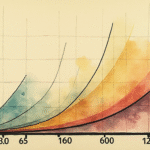Background on the Situation
For the past 16 years, starting from 2009, each first quarter of the year reported a positive annual job creation. However, 2025 broke this trend as it marked the worst start in job creation since 2009, excluding pandemic effects.
Job Market Changes
- Job losses: In the first quarter of 2025, there was a net loss of 119,896 jobs, the worst figure for any given period since 2009.
- Decrease in unemployment: Alongside job losses, the number of unemployed individuals dropped by approximately 52,000.
- Unemployment rate: Despite the decrease in unemployment, the unemployment rate slightly increased from 2.4% to 2.5%.
Impact on Población Económicamente Activa (PEA)
The decline in employment levels led to a reduction of over 170,000 people in the PEA, marking the first decrease in a first quarter since 2005 (excluding pandemic effects).
- Participation rate: The participation rate fell to 59.2%, a decrease of 0.8 percentage points from the previous year and below pre-COVID-19 levels.
Informal vs Formal Jobs
Of the lost jobs, 73% were informal positions, while formal employment saw a more moderate decline of 32,000 jobs. The informal job rate remained unchanged at 54.3% compared to the same period in 2024.
- Subordinated and self-employed jobs: Subordinated (136,694) and self-employed (220,745) jobs showed positive growth, but losses in employers (-255,755) and unpaid work (-221,580) outweighed the gains and negatively affected overall job creation.
Historically High Growth in Labor Inactivity
The decrease in PEA was accompanied by a historically high growth in labor inactivity, with the Población No Económicamente Activa (PNEA) increasing by 1.2 million people in the first quarter of 2025, the highest since 2009 (excluding pandemic effects).
- PNEA growth: The PNEA saw continuous annual growth in the past two first quarters, with an increase of 819,574 people in the period of January-March 2024.
- Categories of inactivity: Of the PNEA growth in the first quarter, 80% fell under ‘not available,’ meaning people engaged in home duties, studies, retirement, or personal impediments preventing them from participating in the labor market.
Key Questions and Answers
- Q: What was the job market trend before 2025?
- Q: How did the unemployment rate change in 2025?
- Q: What happened to the Población Económicamente Activa (PEA) in 2025?
- Q: How did informal and formal jobs perform in 2025?
- Q: What caused the historically high growth in labor inactivity?
A: For the past 16 years, each first quarter of the year reported a positive annual job creation, except for 2020 and 2021 due to the pandemic’s effects.
A: Although the number of unemployed individuals decreased, the unemployment rate slightly increased from 2.4% to 2.5%.
A: The PEA decreased by over 170,000 people, marking the first decline in a first quarter since 2005 (excluding pandemic effects).
A: Of the lost jobs, 73% were informal positions; formal employment saw a more moderate decline of 32,000 jobs. The informal job rate remained unchanged at 54.3%.
A: The growth in labor inactivity was primarily due to people engaged in home duties, studies, retirement, or personal impediments preventing them from participating in the labor market.






